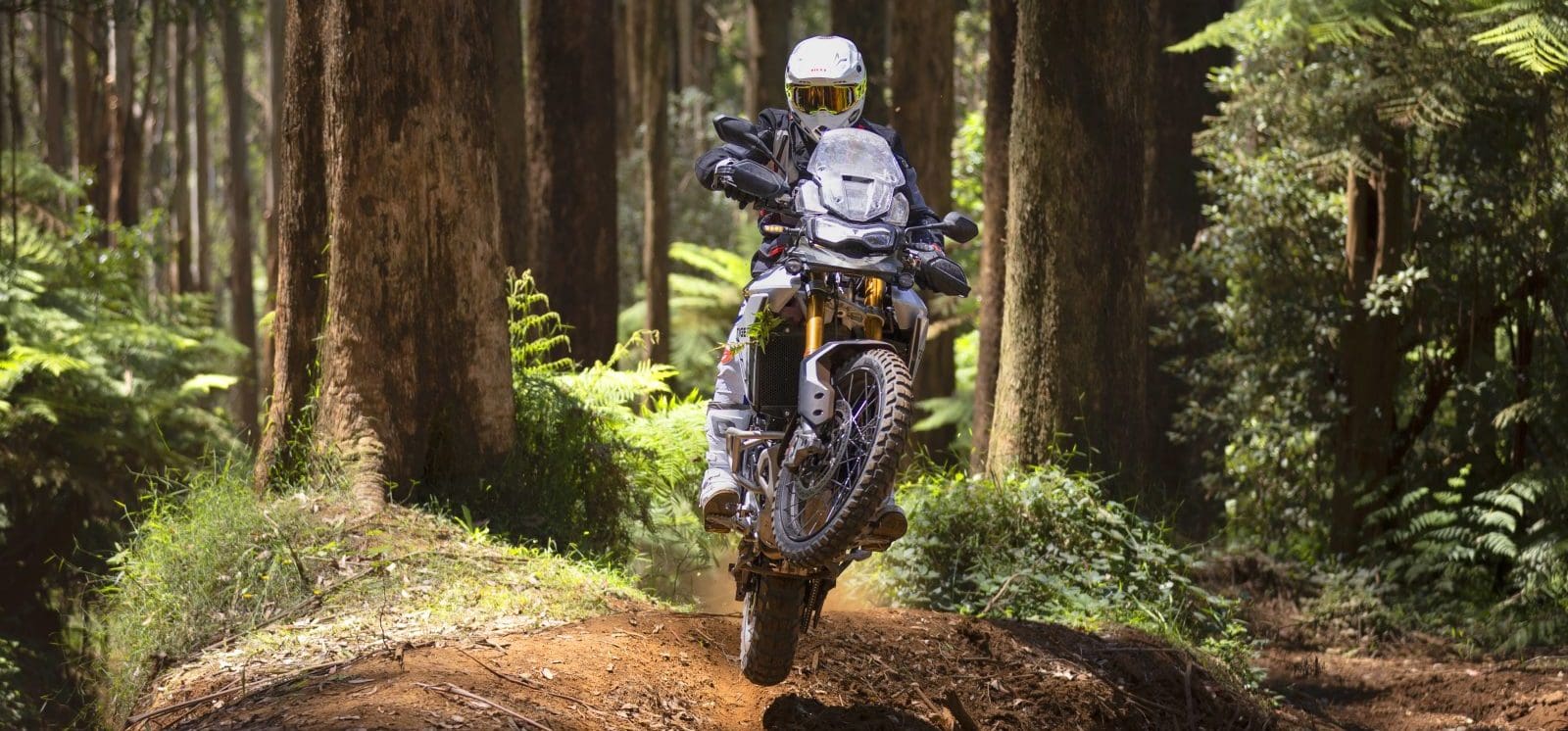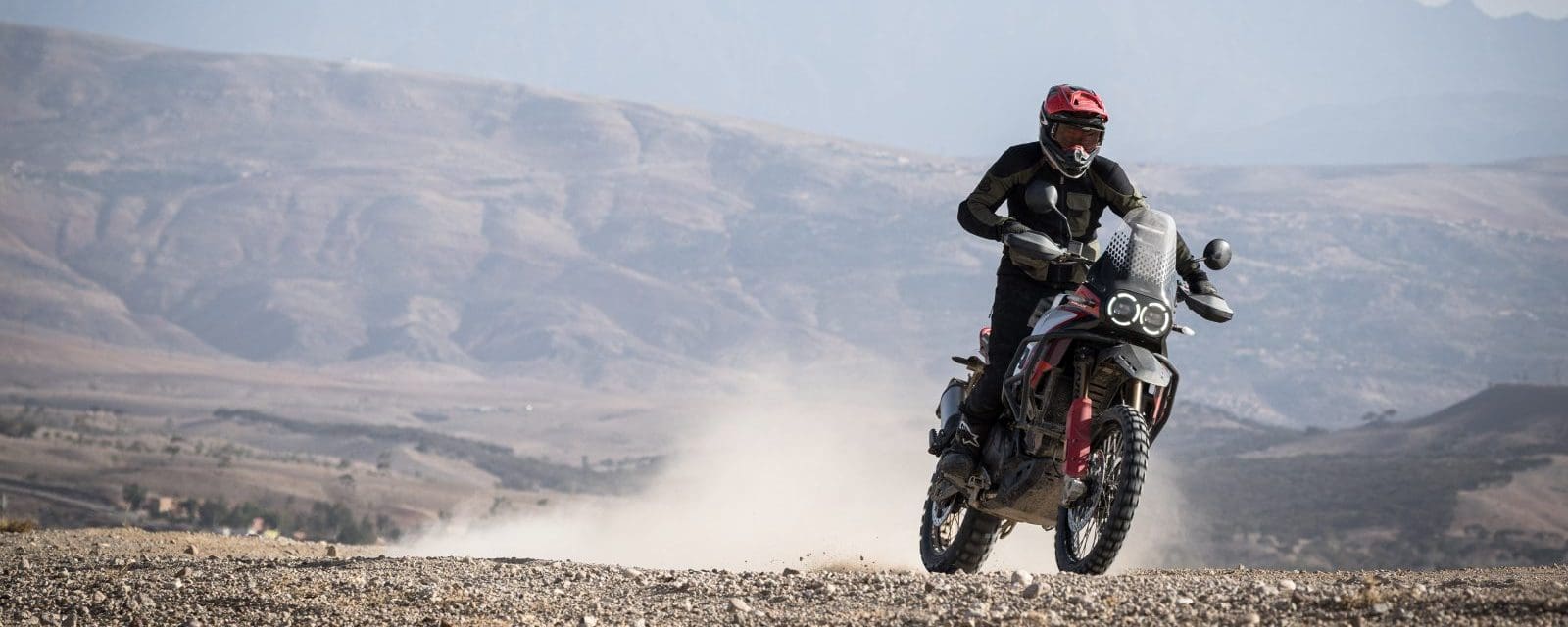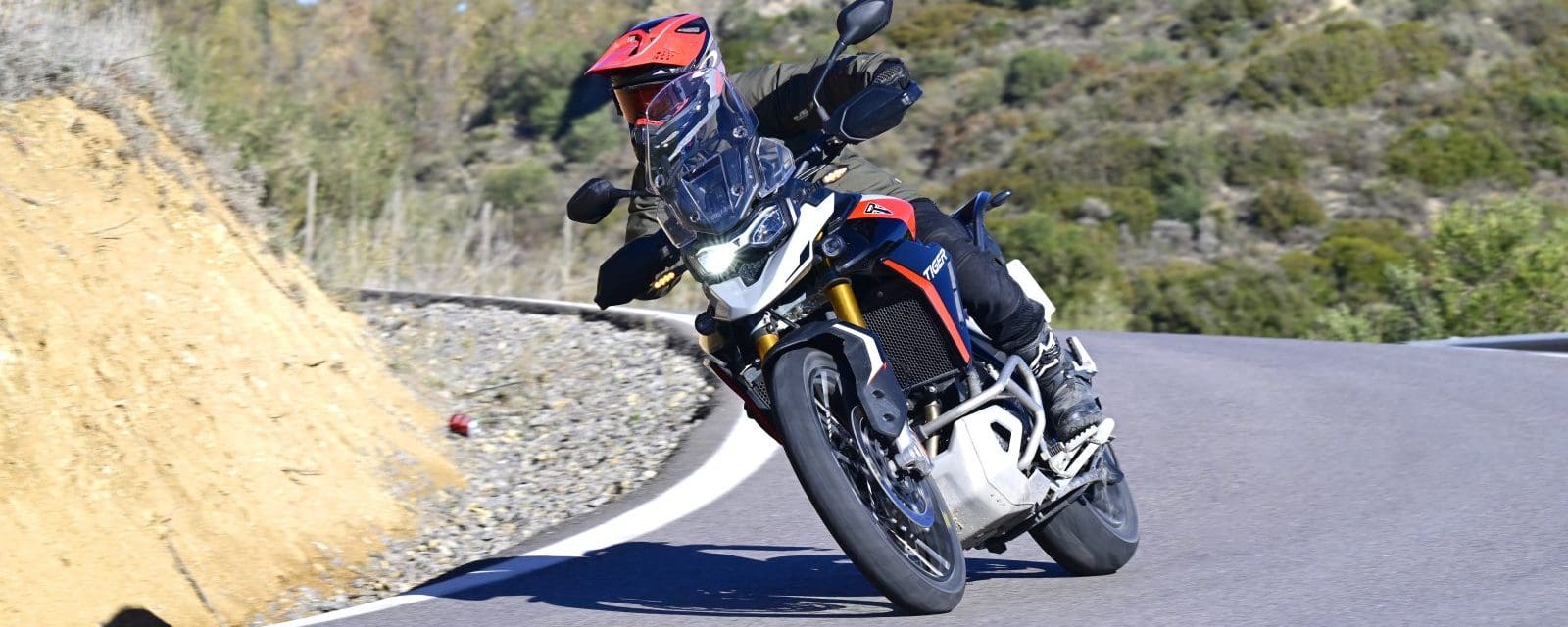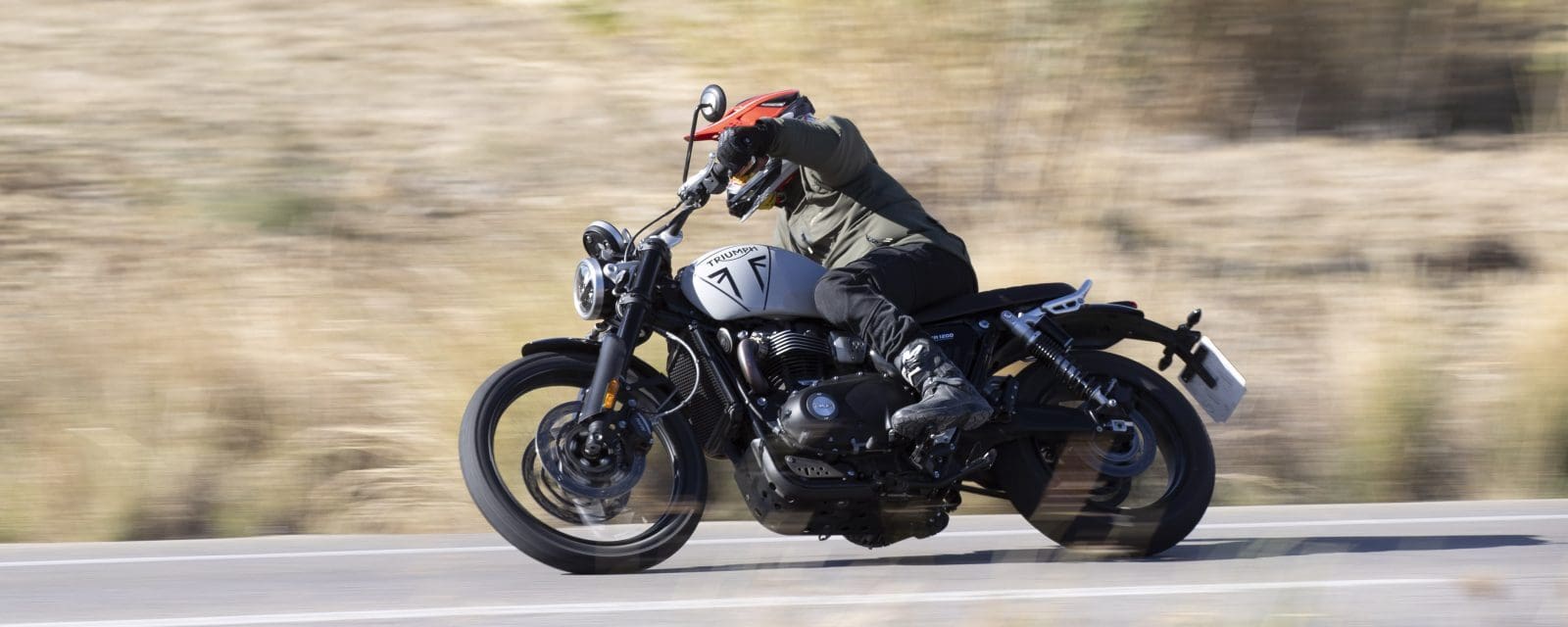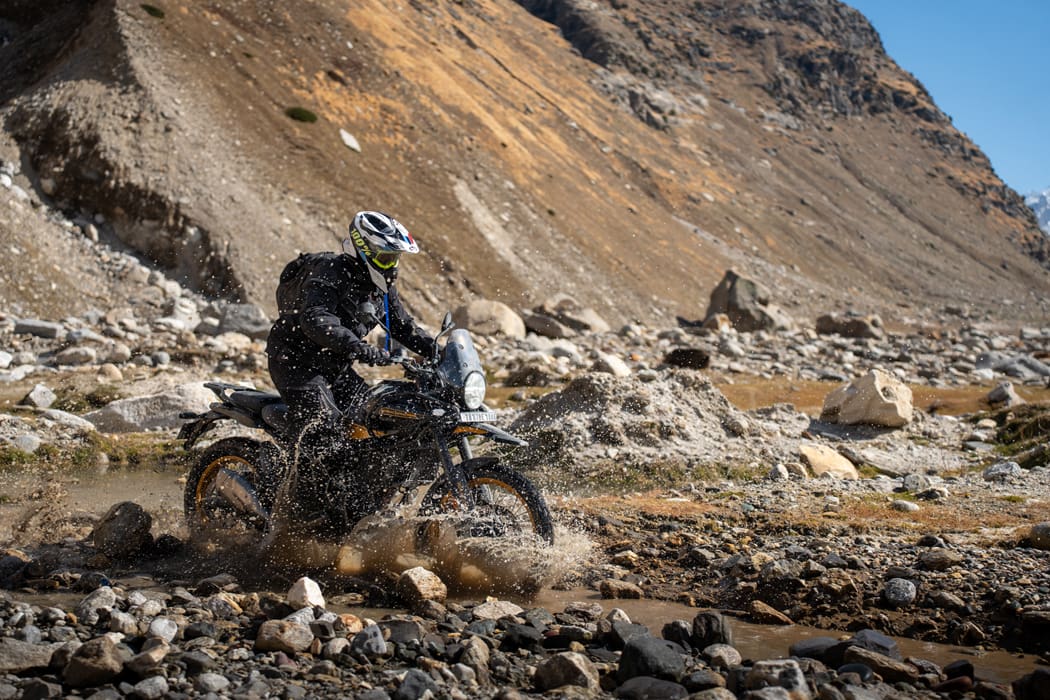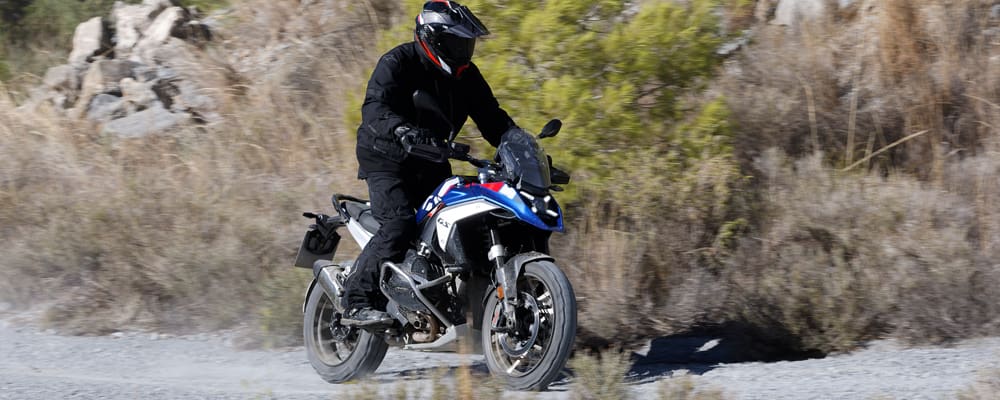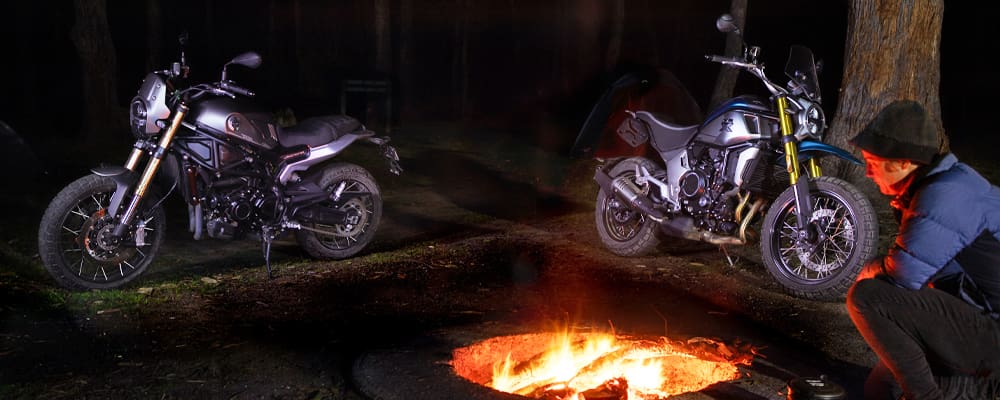Rarely do you come across a comparison where the two bikes going head-to-head are so closely matched, at least on paper. Honda’s XL750 Transalp and Suzuki’s V-Strom 800DE are very closely matched when you peruse the specs sheet, as are the Hornet and GSX-8S which are built around the same platform. Our comparison of the Hornet and GSX-8S against Yamaha’s MT-07 received a great reception (AMCN Vol 73 No 04) and, judging by the talk around the campfire, this is an even more highly anticipated match-up. I’ve been stinging to get these two together since we first broke the news of their existence well before anything official was released.
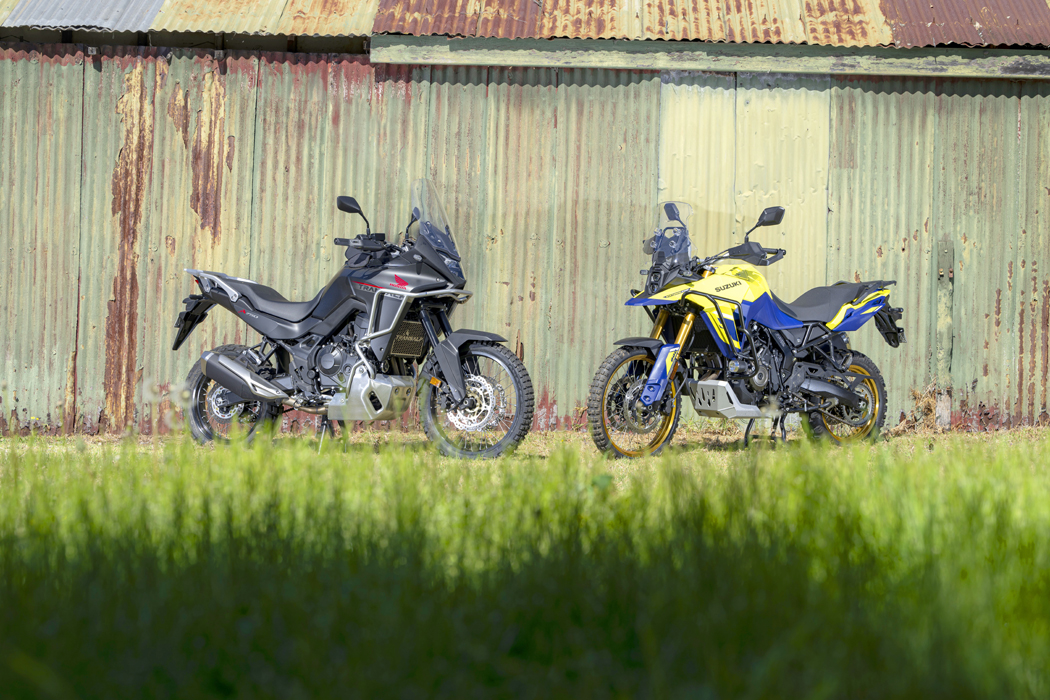
I attended the launches of both these models, put plenty of road miles under my belt and formed a clear idea of how each performed on the blacktop. You can read my impressions in that regard in Vol 72 No 20 (V-Strom) and Vol 73 No 02 (Transalp). In short, they are both consummate adventure tourers but for my size, weight and riding style the V-Strom is a better fit. I thought the seat on the Transalp was brutal on the lower cheeks after a stint in the saddle, and the suspension a little soft for my generous proportions, but I was willing to forgive those things because I love the Transalp’s engine.
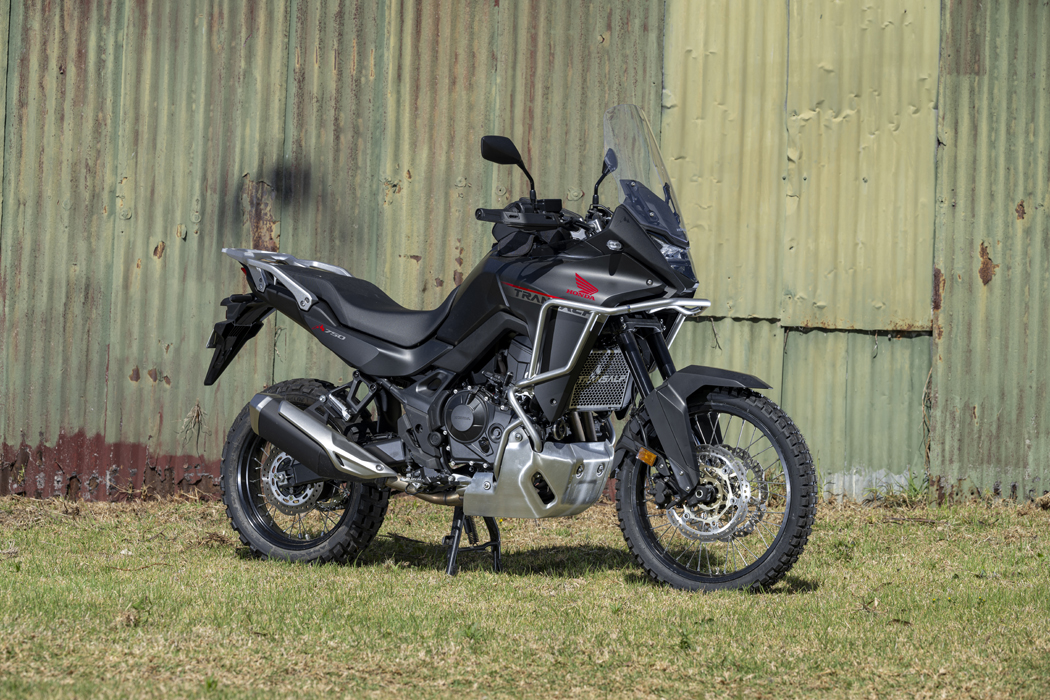
Plenty of road miles is one thing, but these motorcycles are designed for and deserving of a little off-road adventure and neither launch allowed me to properly assess the pros and cons of each. So this test is heavily focused on their off-road abilities. They may be similar on the specs sheets and neck-and-neck on the road, but off-road there is a clear standout.
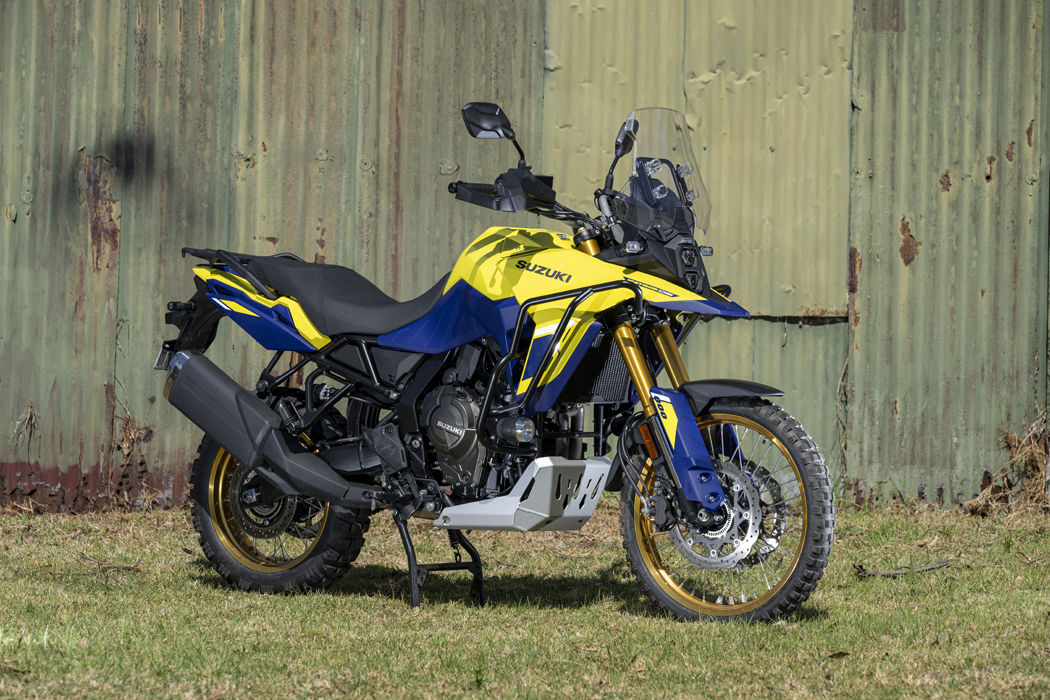
The engine room
Parallel twins get a bad rap I reckon. Yes, there was a time when they were boring, soulless units but that is no longer the case. Both mills have plenty of poke for road and off-road duties, two-up or solo and, especially in the Honda’s case, even carry themselves with a bit of character.
The Transalp’s 755cc engine is lifted straight from the Hornet 750 and produces the same 67.5kW (90.5hp) of claimed power at 9500rpm and 75Nm of torque at 7250rpm. The V-Strom’s engine is identical to that used in the GSX-8S and punches out the same 62kW (83hp) of power at 8500rpm and 78Nm of torque at 6800rpm.

The Honda loves to be revved and, on the road, its extra mumbo, combined with less pork, means it will pull away from the V-Strom with ease.
The Suzuki is the boss in the midrange but it’s geared taller, so it doesn’t feel as spritely as the Honda off the throttle.
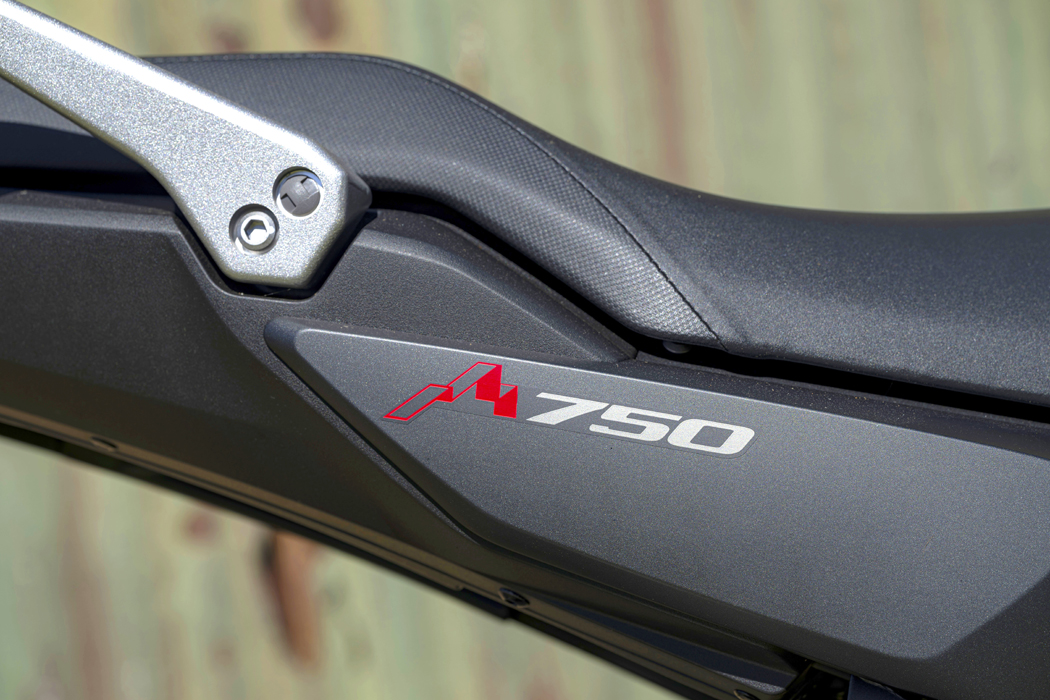
Off-road, the tables are turned a little. The Suzuki’s power delivery is smoother and easier to modulate in the dirt with traction control turned off, whereas the Transalp can be a bit angry and more finesse through the ride-by-wire throttle is required to keep the rear wheel under control. That being said, suspension performance comes into the power-versus-grip equation, which I’ll get to shortly.
The Suzuki’s donk does pump out a bit of heat around your calves, which I found especially noticeable on the right-hand side. The heat grabbed my attention to the extent that I took a look down to see if I had a boot covered in hot oil. I didn’t ride in particularly warm conditions so it may cause some discomfort in the guts of an Australian summer.
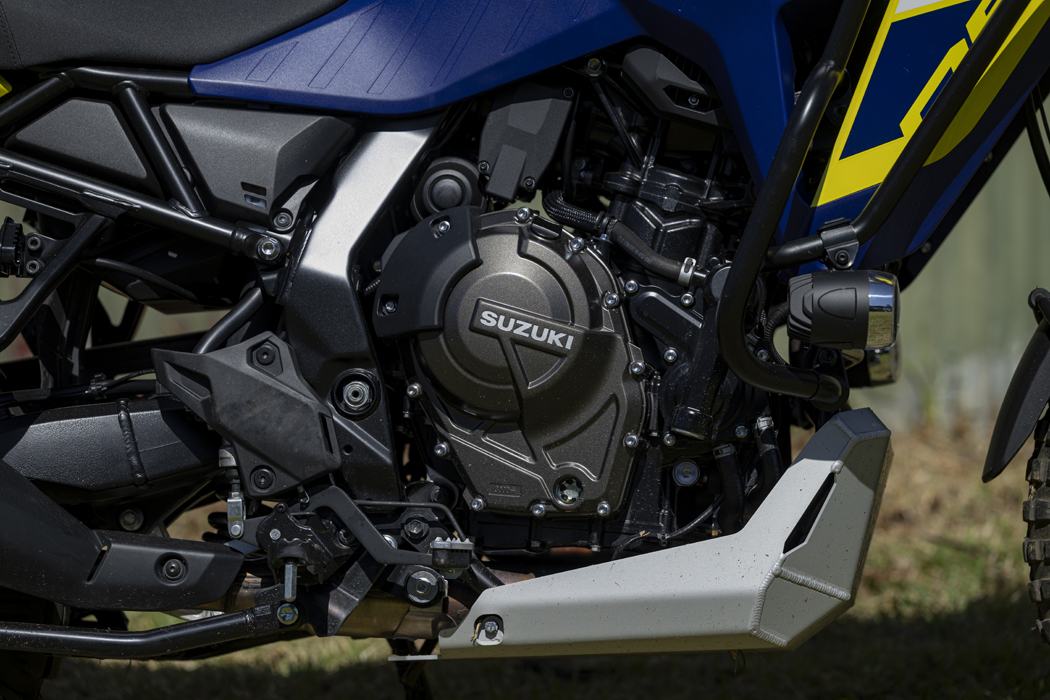
It’s hard to fault either engine and, given they’ve both been lifted straight from a couple of roadbikes, that’s surprising. Both have enough power and torque to tour, overtake, commute, hoon and drag half the contents of your house around this big brown land.
But the Honda’s engine is the winner for me. On the road it’s epic fun, it’s full of character and has plenty of power. Although it’s not as well suited to off-road riding as the Suzuki, there’s not enough in it to give the Suzuki the win.
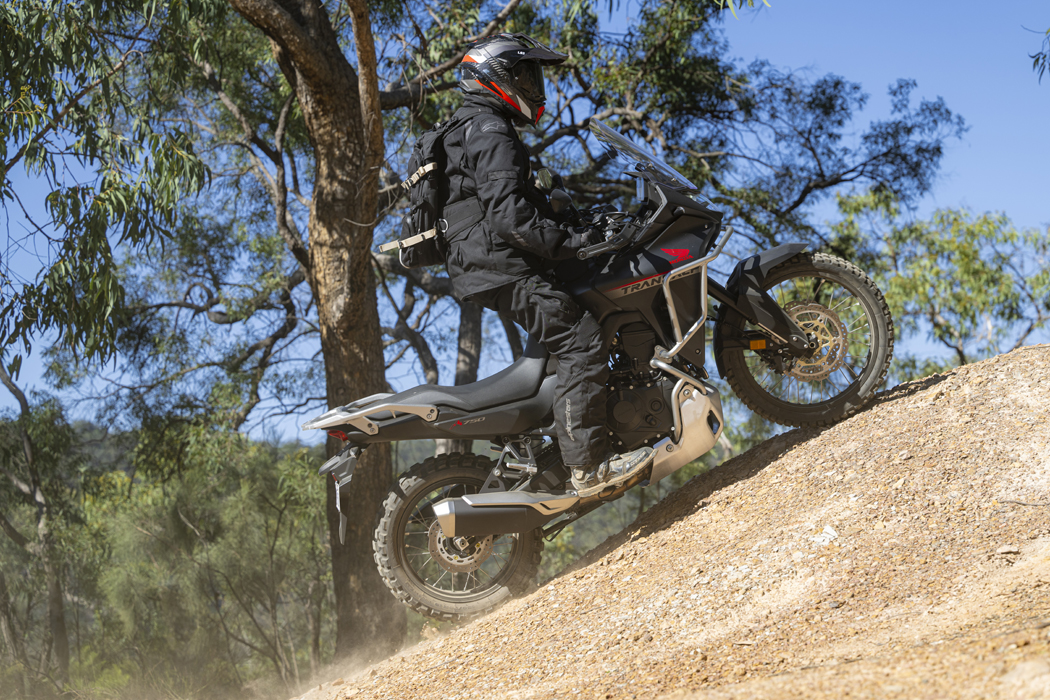
Suspension and handling
Suspension spec and performance are the biggest differences between these two, so if your riding leans toward off-road expeditions, the Suzuki should be in your shed.
Both machines run Showa kit, with the Transalp adorned with a 43mm USD fork offering preload adjustment and 200mm of travel and a preload adjustable monoshock with 190mm of travel. The V-Strom rolls with a beefier fully adjustable 45mm USD fork, and a fully adjustable monoshock giving 220mm of travel at both ends.
So the V-Strom’s kit is fully adjustable and offers more travel, but it’s not just the spec sheet that highlights the difference because there’s a contrast in the way these bikes ply their trade on and off-road. On the tarmac the V-Strom returns a better overall ride experience with the exception being quite a bit of dive when you grab a handful of front brake. The Honda doesn’t suffer this fate as much but, Honda lovers, I’m afraid that’s about the only thing the Transalp’s suspension has over the V-Strom’s. By every other measure the Suzuki’s kit is better and it handles accordingly.

The Honda’s suspension is fine for normal street riding and touring, but when the pace increases, the Honda will tend to wallow in the rear through bumpy corners, it also scrapes its ’pegs quite easily and, overall, just doesn’t feel as composed as the V-Strom. But the difference isn’t night and day.
Head off-road and it’s a different story. On well-maintained dirt roads, the Transalp goes alright; rear traction issues come to light, especially on corrugated corners, but the Honda’s lively engine makes sliding the rear through big sweeping corners and letting the roost fly out of slower ones quite a bit of fun. All very enjoyable and spectacular, but meanwhile the V-Strom has disappeared into the distance.

The rougher the road, the more the Transalp struggled and the more uncomfortable I felt. The front-end deflects off obstacles to the point where you really need to slow, pick your lines carefully and nurse your way through until you’re back on a smoother surface.
Getting the power down on the Transalp is a chore, as the rear shock could do a much better job at keeping the rear wheel in contact with the ground. The rear skips and deflects over bumps instead of driving you forward. This also plays havoc with the Transalp’s traction control in Gravel mode, which I’ll come to.
The V-Strom, on the other hand, feels right at home on rough tracks. The suspension simply trundles over rough terrain and the weight that can hinder the Suzuki in tight conditions helps with momentum. Off-road neither bike is in the same class as the KTM 890 Adventure or Aprilia Tuareg. So if you’re really looking to crawling deep into the jungle these aren’t the bikes to do it on, but the V-Strom has the goods to undertake some pretty ugly adventuring and it’ll do it rather well.
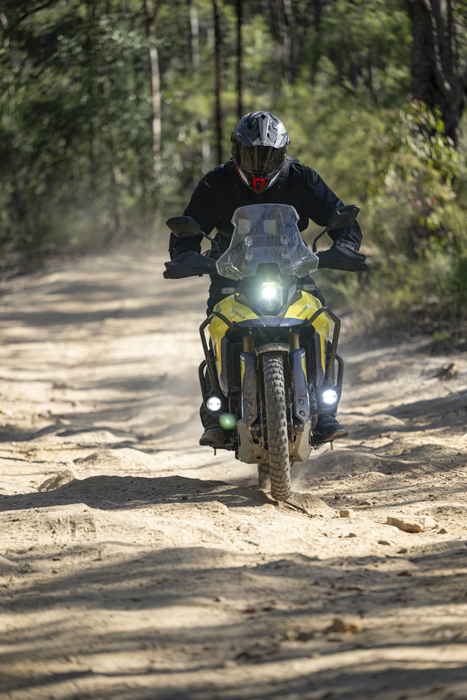
Further helping the V-Strom’s off-road feel is a significantly wider handlebar, which provides excellent leverage making it feel less like the ’bar will be ripped from your hands. Its stand-up riding position feels more natural too.
The V-Strom isn’t perfect out of the box but it’s pretty damn good. Having the ability to fiddle with suspension settings to suit your riding style or the conditions is worth more than the $2500-odd price difference for me.
The V-Strom is the clear winner in this section. The Suzuki’s suspension is better than the Transalp’s and the rougher it gets, the more the V-Strom shines and the more the Transalp struggles. If you’re not heading off-road, then the difference isn’t a deal breaker, but if you like to get dirty it has to be the Suzuki for the win.
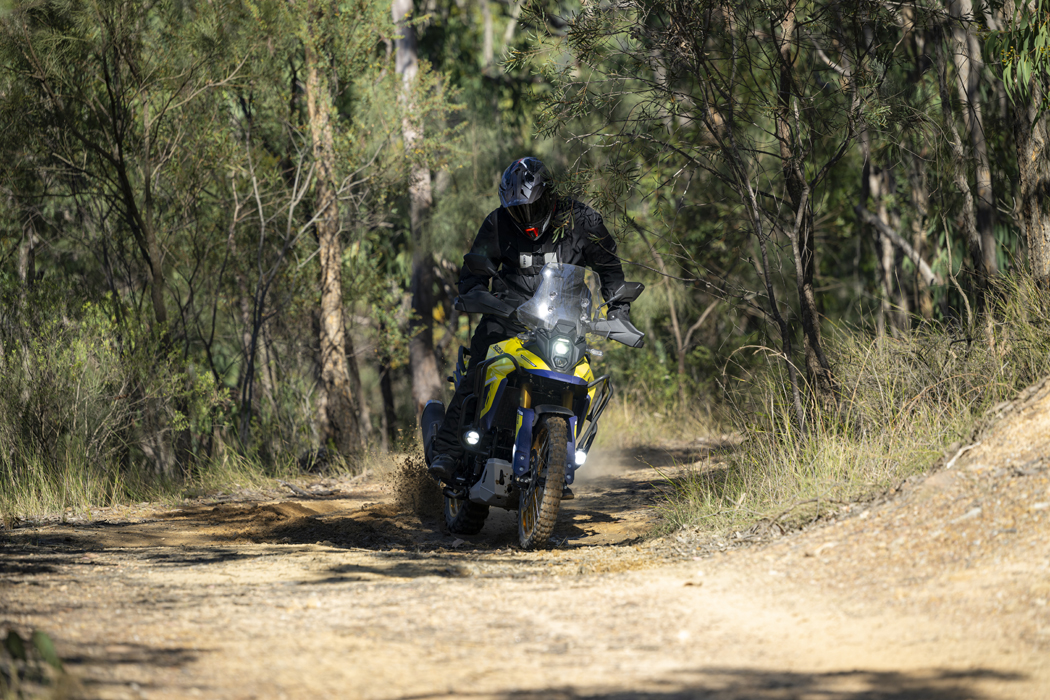
Braking it down
It’s like Honda and Suzuki were fishing around in the same parts bin when it was time to throw braking packages at these bikes. Both run ABS-infused Nissin twin-piston calipers on the front grabbing 310mm rotors and a single-piston Nissin caliper on the rear. The Honda sports a slightly larger 260mm rear disc compared to the V-Strom’s 256mm disc.

It’s hard to pinpoint an area where one set-up is better than the other. The initial bite from the front of the Transalp is slightly stronger but this could be due to pad material. It could also be down to the fact that the V-Strom weighs more. The only discernible difference is on the rear. The Transalp’s rear gives excellent feedback through the pedal, and you can feel when you’re about to lock the rear. It’s progressive, powerful and on point. The V-Strom’s rear brake lacks the heightened level of feedback and I found it a tad grabby. This trait is only apparent when you’re pulling off slow-speed technical riding, like stand-up U-turns on gravel, or feeding your way through a tight singletrail. In other situations, it is perfectly fine.
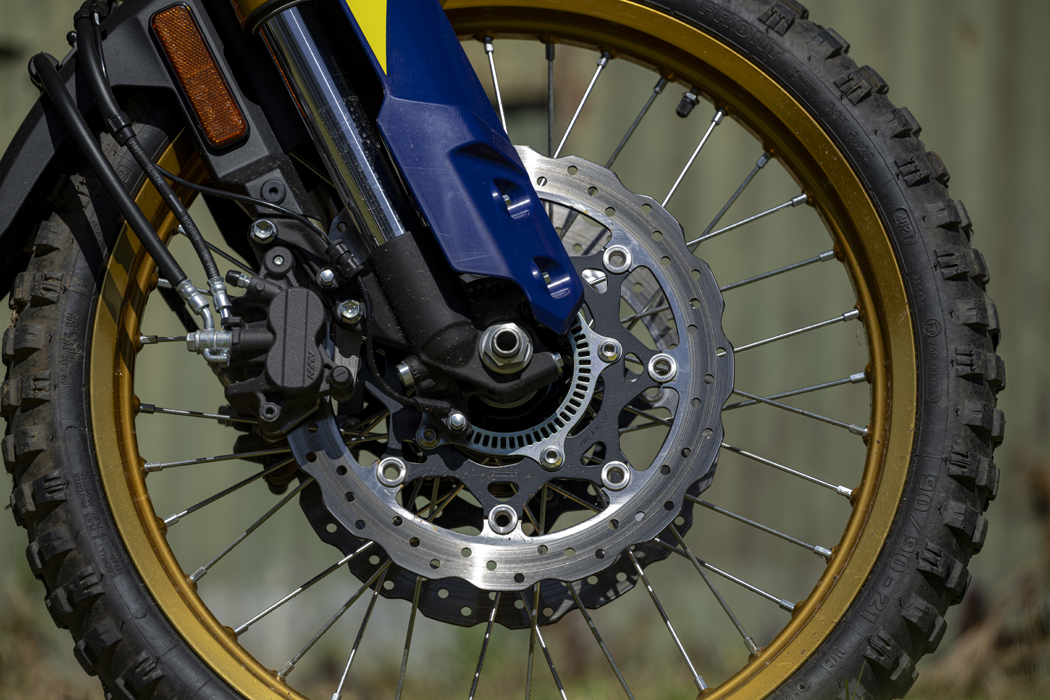
Both bikes run dual-channel ABS so there’s no cornering ABS, but ABS can be turned off on the rear either manually or by selecting each bike’s Gravel mode. Long gone are the days of having to – or wanting to, turn ABS off at both ends – the technology has come a long way. Neither will send you spearing off into the bush when the ABS kicks in on the front. Sure, you’ll stop quicker without it if you know what you’re doing, but I didn’t feel the need to ditch the ABS on the front even if I could. In fact, unless you’re channelling your inner Dakar rider, there’s no reason you couldn’t spend your dirt-road time with ABS on at both ends. It’s amazing how good these systems are these days and we’re talking entry-level bikes.

I’m giving the Transalp the slight advantage here. Just like the V-Strom, the brakes are excellent and plenty powerful, but the Transalp’s rear provides better feedback and it’s less grabby. It’s a close one to call though because the grabby nature of the V-Strom is only noticeable in a very narrow range of riding conditions.
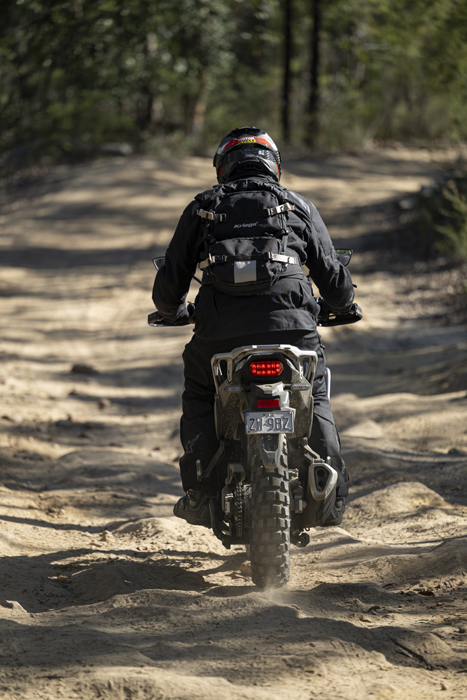
Comfort and ergos
The similarities between these two converge again when we talk about their ergonomics. Both are super comfortable in the seated position, although the Transalp’s seat can grow teeth after a solid stint in the saddle. The Suzuki’s seat feels wider and more supportive as you slide your bum back and is the pick of the two for me.
Your feet sit slightly farther forward and the reach to the ’bar is a little farther on the V-Strom, which feels more aggressive and ready for action, putting less weight on your tailbone. The Transalp is more upright and puts a little more weight on the tailbone, possibly adding to the feeling that the seat is a little bitey.
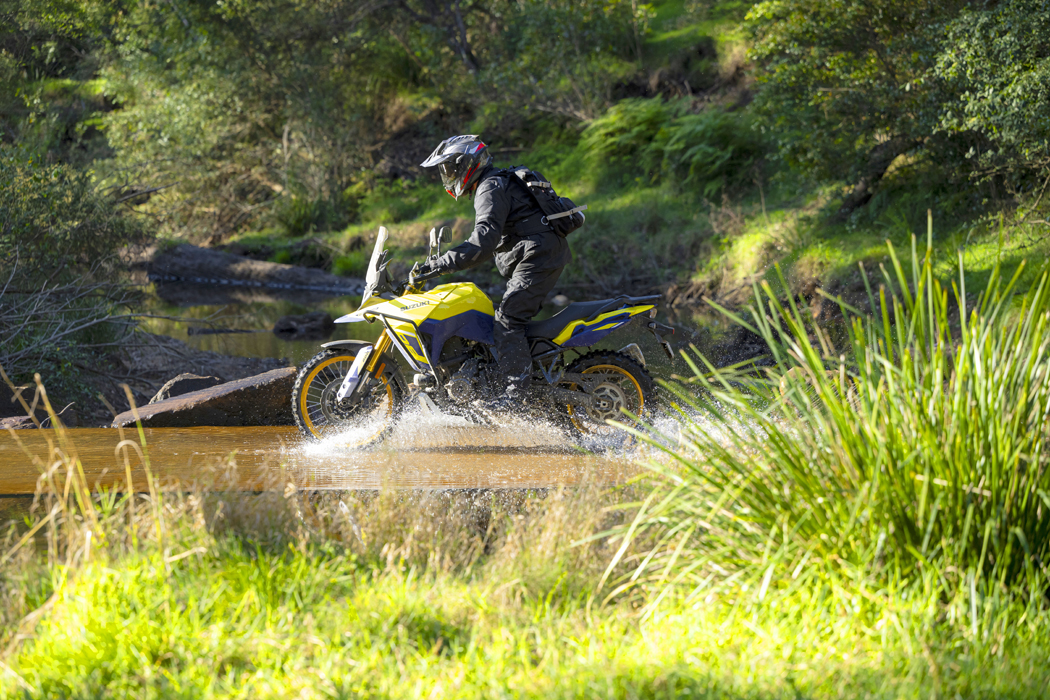
Both have sturdy, well-sized rear racks to bundle your stuff on to, with pillion handrails incorporated that look sturdy and safe
Both offer good protection from the elements, especially with the larger genuine accessory windscreens fitted to our testbikes. But if you’re doing any meaningful off-road work, they can get in the way, especially the Honda’s tall screen, which just looks like it’s ready to throat punch you for making a mistake.

The shape of the Honda’s 17-litre steel fuel tank makes it a tad harder to grip the bike while standing. Although larger at 20 litres, the V-Strom’s tank is better suited to riding while standing up on the ’pegs.
I’m going to give the V-Strom the win here but it’s a pretty close call. Both are supremely comfortable, but I’ve given the Suzuki the win because it has a more comfortable seat, better suspension which smooths out the ride and it has handguards fitted as standard, so there’s a little more protection from the wind. Furthermore, being an off-road test, the V-Strom just feels better when you’re up on the ’pegs.
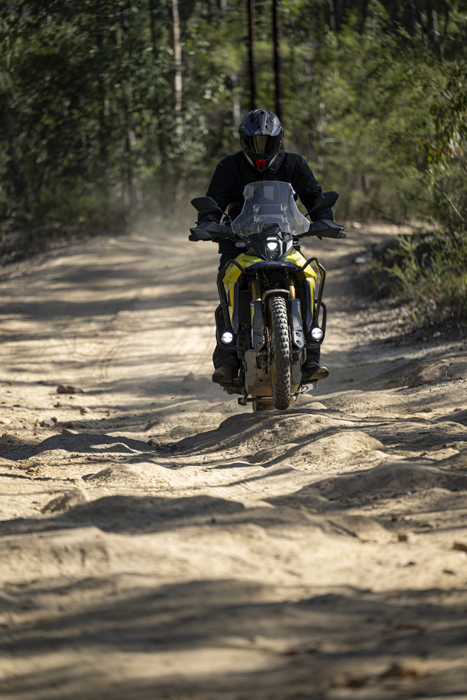
Go, go gadget
We live in a time when entry-level adventure machines are packed with tech that was unthinkable just a few years ago. Both bikes feature ride modes, traction control and ABS that, along with the power delivery, can all be adjusted individually to suit skills and conditions.
The Suzuki also offers a quickshifter, an easy-start feature that basically means you push the starter once and it cranks over automatically until it starts, as well as low-rpm assist, which bumps up the revs when you start clutch engagement. The Honda’s electronics allow you to adjust how much engine braking comes into play and it includes some handy features the V-Strom doesn’t have, such as smartphone connectivity, an emergency stop function that has the indicators doing their disco thing and self-cancelling indicators.
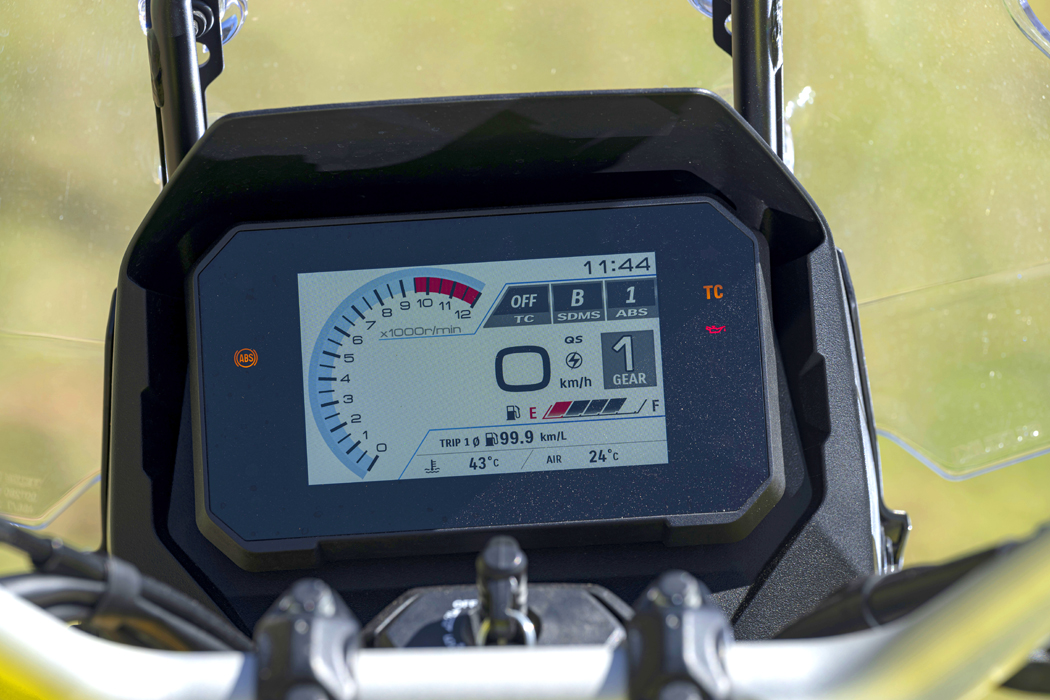
Both offer a Gravel mode which, when activated, cuts the ABS on the rear, and trims the traction control so you can spin or slide the rear off-road. This is a good option for novice riders as it should prevent you going arse-up if you’re too ambitious with the throttle. The amount of spin allowed is rather restrictive, so experienced riders may decide to turn traction control off altogether. The Suzuki’s traction control handles things better, and still delivers solid drive. You can feel it kicking in but it doesn’t slice the power abruptly so the transition between grip and no grip is smooth.
If there are corrugations or the dirt is uneven, it’s best to kill the traction control altogether on the Transalp because it just can’t handle the task. It bogs down and steals the power abruptly, which isn’t ideal or good for the blood pressure when you’re standing up, leaning forward and waiting for the power to kick in. I suspect this has more to do with the sub-par performance of the suspension rather than a fault within the system. If the suspension could keep the wheel on the ground rather than skipping about, the traction control would probably perform better.
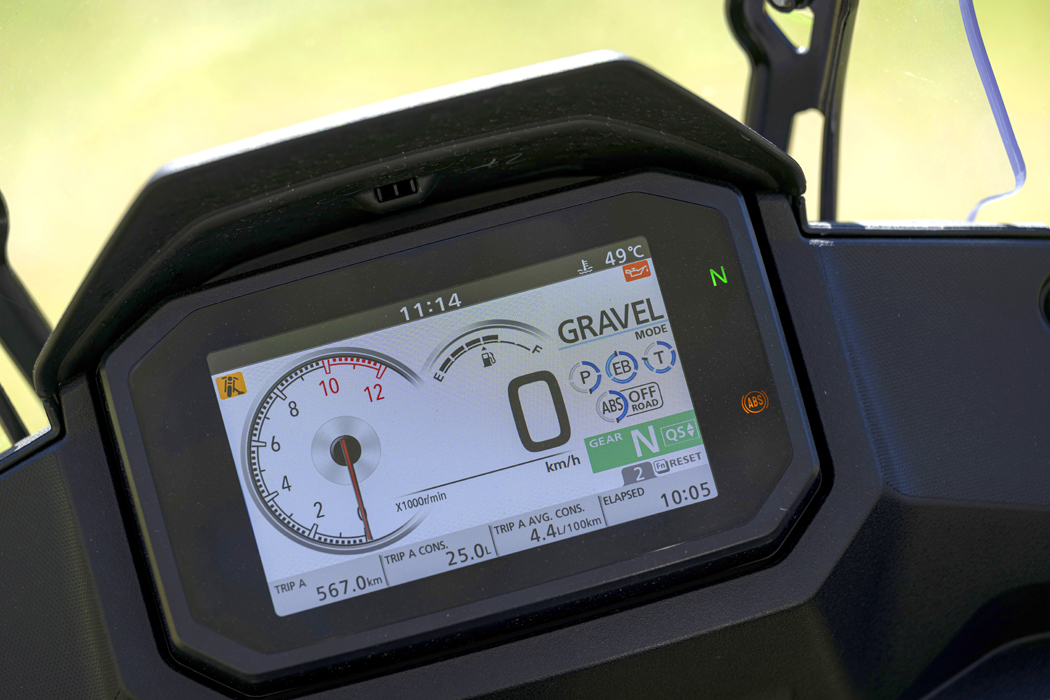
On road, the Honda’s electronics work perfectly well, as do the Suzuki’s, and you can always turn the traction control off to alleviate the interference.
The V-Strom’s TFT screen is easy to read and the menu is simple to use. The Transalp’s TFT display is a bit busy and that means small characters that are harder to read. Both provide all the information you need, although the V-Strom also has an ambient temperature gauge which is a nice touch for a long day in the saddle.
It’s ridiculous to think that neither of these adventure tourers come fitted with cruise control. Perhaps it was a cost-saving decision and I get that, but cruise control isn’t even available as an option. Some won’t care, but for some this omission will be a deal breaker – it would be for me.
It’s such a close call. The Honda has a few extra gizmos but then the V-Strom has a quickshifter standard, and the traction control works better in more situations, so there’s a small points advantage going the Suzuki’s way.

Banging bucks
Outwardly the Transalp seems like the better buy and, if you’ve no plans to spec the Honda up, at around $16,000 it is. The V-Strom is more expensive at $18,590, but the Suzuki comes with some standard features that the Transalp doesn’t. Firstly, there’s a quickshifter, handguards and a skid plate, albeit it a plastic one. Once you pay the $399.21 for Honda’s quickshifter, $762.30 for the aluminium skid plate, which it needs to protect its vulnerable sump, and bung on a set of $257.87 knuckle guards, you’ve closed the gap by just over $1400 without the cost of fitment. However, if you wanted to get the suspension on the Transalp to perform at a similar level as the V-Strom, then the Honda is going to cost you more.
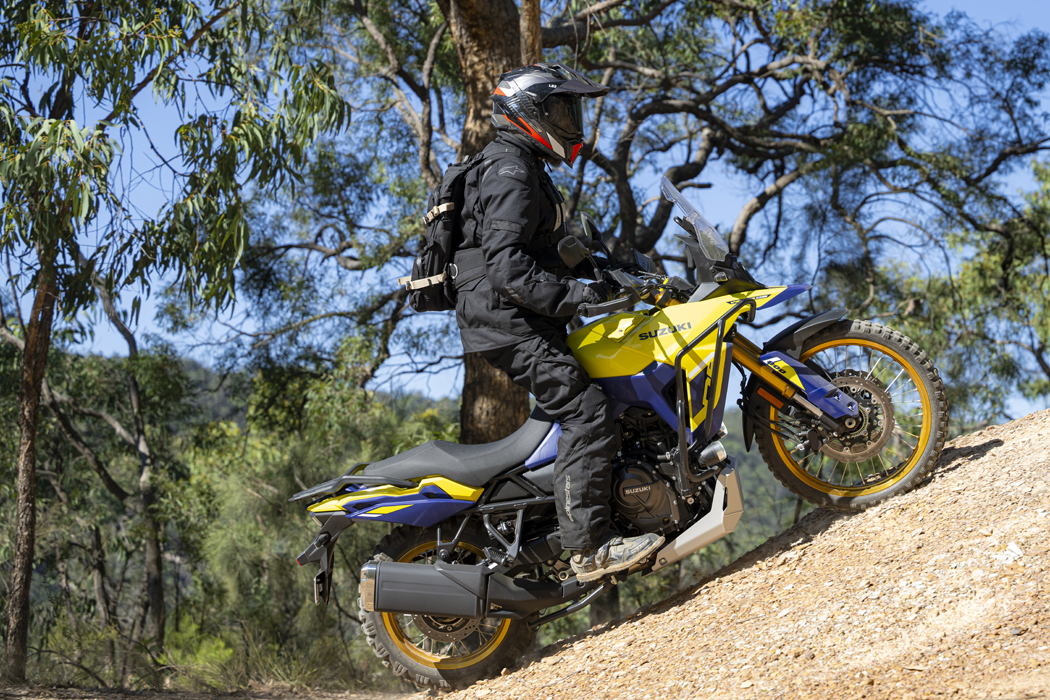
I’m calling it a draw in the bang for bucks’ stakes because what you add and what you think you need is such a personal thing. They are pretty close on price if you go spec for spec, but if I did have to call a winner I’d say the Transalp, simply because the price of admission is lower and sometimes it’s easier to add fruit to your ride as you can afford it. Let’s be honest, if you’re riddled with cash you’re probably not looking at these two anyway.
I’m going to sit on the fence with this one. Yes, the Honda is less expensive, but it’ll cost you more than the difference in price between the two to get it to the same level as the V-Strom. On the other hand, not everyone wants to up-spec their adventure bike so in that case, the Honda might be the go.
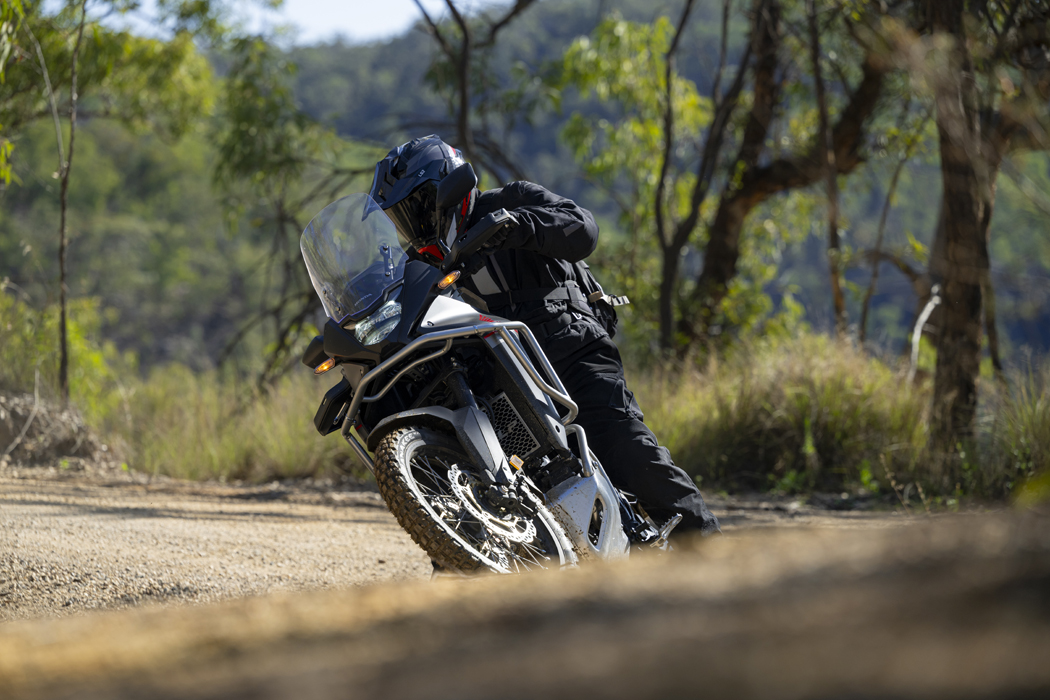
Winner, winner chook-chaser dinner
Two models that seem so similar on paper are really quite different depending on where you take them. On-road, touring about or commuting, there isn’t much difference. If you aren’t heading off-road much or you like to cruise rather than fang, I say choose whichever blows your nightie up when you look at it.
The Transalp is a cracking bike. The finish is excellent for a bike of this price and, to be honest, I prefer the look of the Transalp over the V-Strom. And that engine, that Honda parallel twin is full of beans and character and I’m a very big fan.
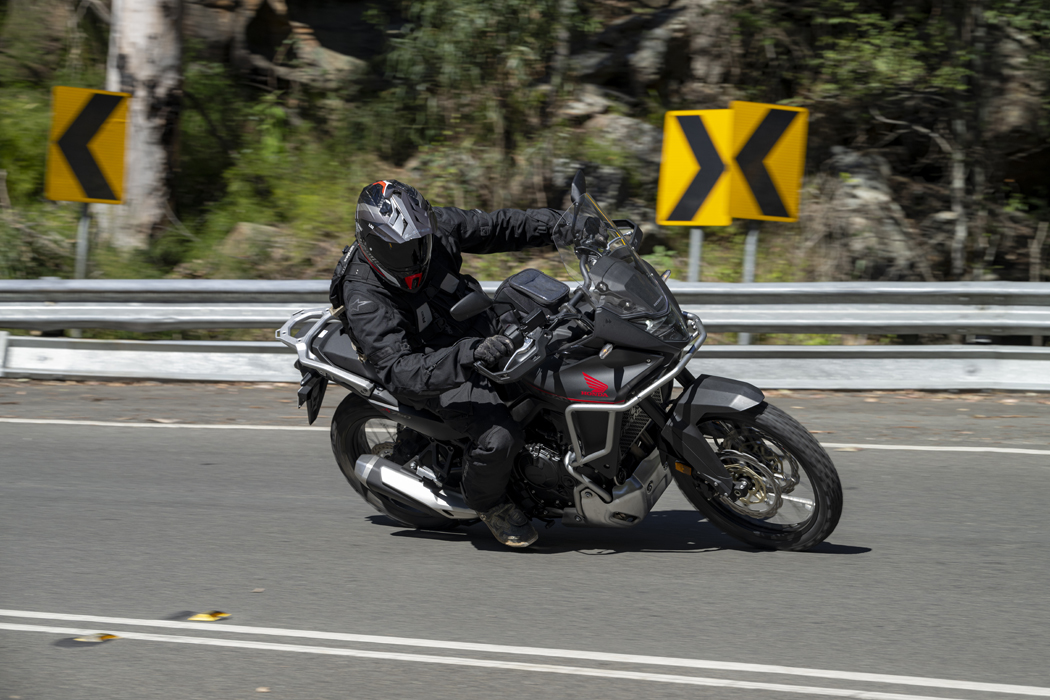
But after assessing these two through an off-road lens I have to hand the award to the V-Strom. It does everything the Transalp can do but, thanks to its superior suspension and its stand-up ride position, it is way ahead of the Transalp off-road, even with its significant 22kg weight penalty. The rougher things get the worse it becomes for the Honda and that’s when the Suzuki shines.
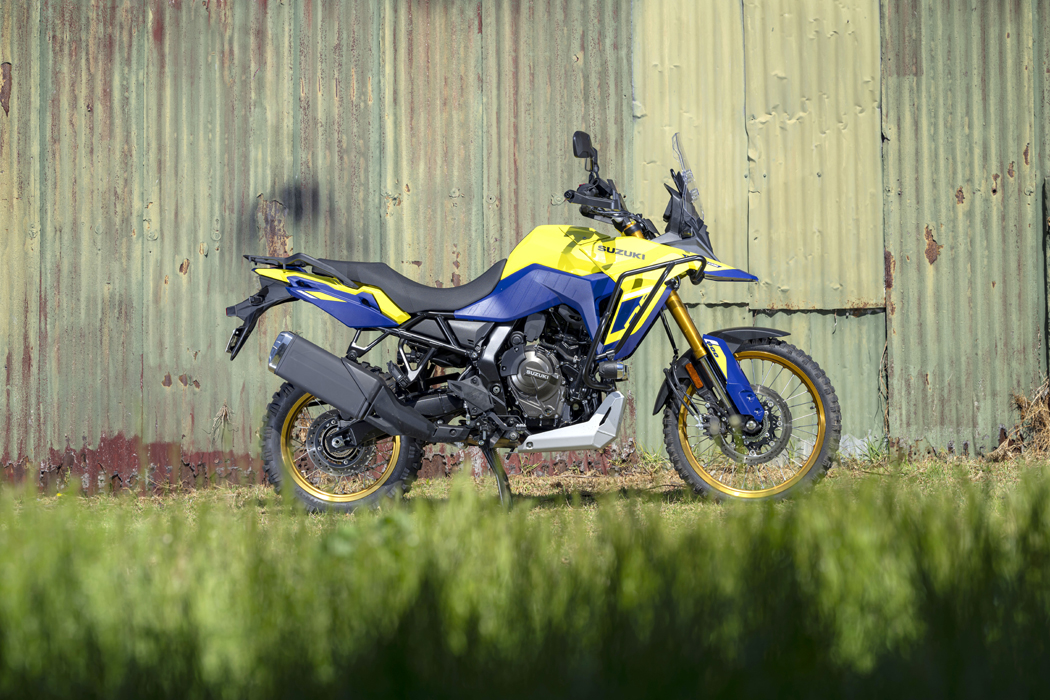
TEST: PETE VORST PHOTOGRAPHY INCITE IMAGES




